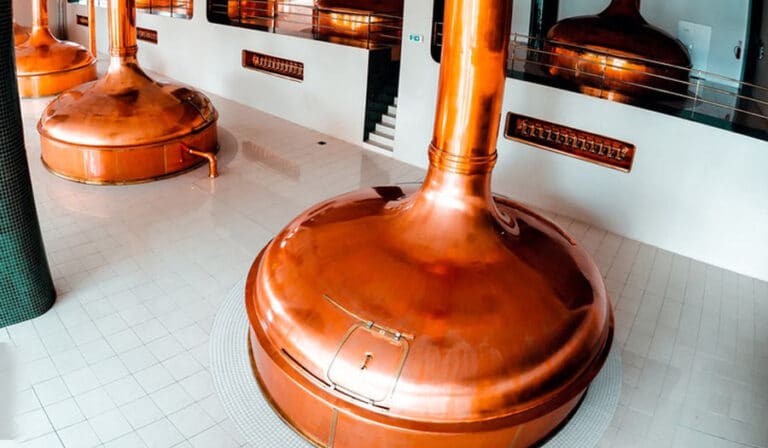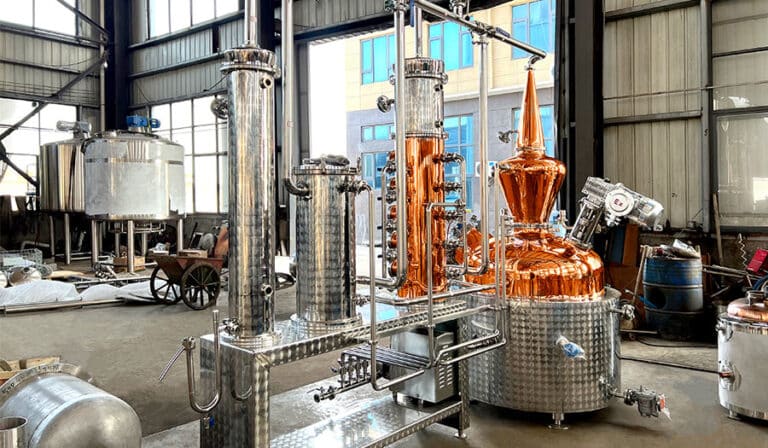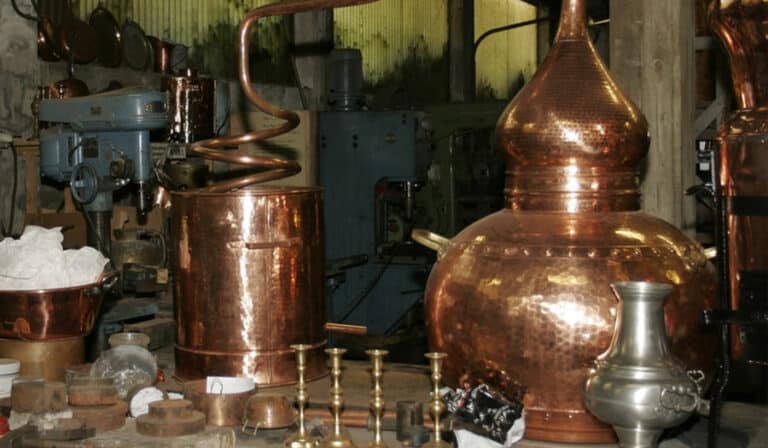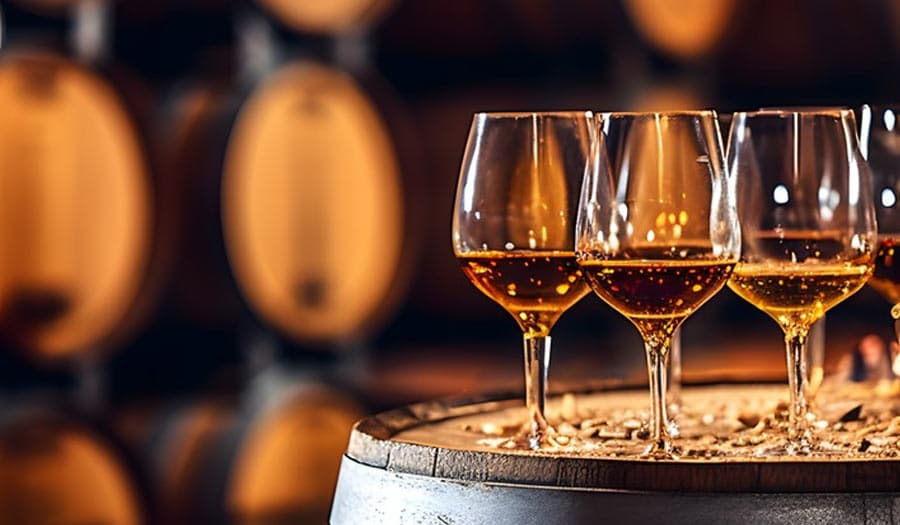For many years, wine has been at the core of world culture. Distilled wine is a process in which the alcohol in wine is evaporated by heating and recondensed into a higher alcohol concentration. Unlike traditional wine making, the purpose of distillation is to extract and concentrate the alcohol content, which is usually used to produce wine spirits (such as brandy), etc. For beginners or winemakers engaged in wine making, it is crucial to understand the distillation equipment. This guide will explain how to make wine and the required distillation equipment to help winemakers make wine better.
Distilled wine is a wine that has been processed to increase the alcohol concentration. The alcohol in wine is produced through fermentation. Wine grapes are crushed to extract the juice, which winemakers call grape juice. Grape juice contains sugar, which is converted into alcohol when yeast is added.
However, when the alcohol concentration is too high, yeast cannot survive, which naturally limits the concentration of fermented wine. This is why you can’t find ordinary wine with an alcohol content of more than 16%. To make beverages with a higher alcohol content, the wine must be distilled.
The alcohol in wine is called ethanol, and it has a useful property: it has a lower boiling point than water. When wine is heated, the alcohol evaporates along with some other components, while the water remains in liquid form. Using a simple device, a distiller, we can separate the evaporated alcohol from the water. The result is distilled wine, which is much stronger than the original wine.
During the wine distillation process, not only ethanol is extracted. Other elements also enter the distillate: aromatic compounds, volatile acids, and congeners. These elements determine the aroma, taste, and mouthfeel of the final product.

Winemaking Process
Grape Crushing and Stemming
After grapes are picked, the next step is crushing. The purpose of crushing is to separate the grape skins from the juice and release the grape juice. Traditionally, crushing can be done by foot, but modern wineries generally use mechanical crushers for this step. For red wine, the grape skins are fermented with the juice to extract color and tannins; for white wine, the grape skins are usually removed and only the juice is retained for fermentation.
After crushing, destemming is also required. The purpose of destemming is to remove the stems of the grapes to prevent the bitter substances and unnecessary flavor components in them from entering the wine. Destemming can improve the taste and flavor of the wine, making the wine more refreshing and balanced.
Fermentação
Fermentation is one of the most critical stages in the winemaking process. In this process, the sugar in the grape juice is converted into alcohol and carbon dioxide by yeast, and other important flavor substances are produced. The temperature, time, and yeast selection of fermentation will have a profound impact on the flavor of the final wine.
- Red wine fermentation: Red wine is usually fermented with grape skins, which helps to extract pigments, tannins, and flavor substances in the grape skins. Fermentation of red wines is generally carried out at higher temperatures to accelerate the extraction of pigments and tannins.
- Fermentation of white wines: White wines are usually fermented at low temperatures to maintain the freshness and acidity of the wine. The grape skins are generally removed to ensure that the wine is clear and light in taste.
Pressing
After fermentation is complete, especially in the production of red wines, pressing is required. The purpose of pressing is to extract the remaining juice from the fermented grape skins to ensure maximum output of the wine. During the pressing process, winemakers need to be careful to avoid excessive pressing and the release of bitter components. For white wines, pressing is usually carried out before fermentation because it does not require the skins to ferment with the juice.
Aging and maturation
The aging and maturation process of wine is to place the wine in a container for further fermentation or standing to make the wine more rounded and complex. The length of this stage and the choice of container have a great impact on the flavor of the wine.
- Barrel aging: Many red wines and some high-end white wines are aged in oak barrels. Oak barrels can provide unique flavors to the wine, such as vanilla, smoke, and roasting, and the breathability of the barrels helps the wine oxidize and soften the tannins of the wine.
- Aging in stainless steel tanks: For white wines that need to maintain a fresh taste and fruity flavor, many winemakers choose stainless steel tanks for aging. Stainless steel containers can maintain the original flavor of the wine to the greatest extent.
Filtration and clarification
After aging, the wine is usually filtered and clarified. The purpose of this step is to remove solid particles, yeast precipitation, and other impurities in the wine to ensure the clarity and stability of the wine. Common filtering methods include the use of filter paper, activated carbon, or microporous filters.
Bottling and sales
The last step is to bottle the mature wine. After bottling, the wine may continue to mature, especially some high-end red wines, which usually need to be aged in the bottle for a long time. After the wine is bottled, it will go through a certain storage period until it reaches the best drinking state before it is put on the market.

Que equipamento de fabrico de cerveja é necessário para o vinho destilado?
Crusher
Crush the destemmed grapes to separate the grape pulp from the juice. Crusher usually uses rotating drums or rollers to crush, ensuring that the juice can flow out smoothly while retaining the flavor of the grapes.
Equipamento de fermentação
Modern wine production often uses stainless steel cubas de fermentação, which have excellent sealing properties, can prevent oxidation, and maintain the pure taste of the wine. Stainless steel is also easy to clean and maintain.
Equipamento de prensagem
- Vertical press: Usually used in the production of white wine, it squeezes the grapes through vertical pressure to extract the grape juice. The vertical press is usually designed as a cylindrical structure with a grid. After the grapes are pressed into the grid, the grape juice is squeezed out by applying pressure.
- Horizontal press: Commonly used in the production of red wine, it separates the grape juice from the grape skin through horizontal pressure and is suitable for mass production. Modern horizontal presses are usually equipped with hydraulic systems that can evenly and accurately control the pressure.
Destilador
- Pot: Usually made of stainless steel, copper, or other high-temperature and corrosion-resistant materials. The pot body needs to be able to heat the wine evenly, and at the same time have good sealing, so that the alcohol gas escapes.
- Heating source: Traditionally, the additional pot can be heated by open flame, steam, or electric heating element. Most modern additional heating equipment uses steam heating, which can more accurately control the temperature and directly avoid the series connection caused by heating.
- Steam: The alcohol evaporated from the pipeline will be transmitted to the condensation device through the steam pipeline. The design of the pipeline must prevent the alcohol vapor from being overcooled or leaking during the transmission process.
Condensador
The function of the condenser is to cool and liquefy the evaporated alcohol vapor. It is usually composed of a long tube or a serpentine tube, and cooling water flows between the two layers of the outer pipes to effectively reduce the temperature of the alcohol vapor and help it condense into liquid again.
Fracturing tower
The fractionator is a device for separating different components, especially for distillation processes that require the separation of different concentrations of alcohol. For distilled wine, the function of the fractionator is to accurately separate the alcohol component and remove other impurities such as water, sugar, and flavor substances. The fractionation tower is usually composed of multiple fractionation trays or pre-set towers. The alcohol vapor rises in the tower, gradually cools and stratifies, and finally collects alcohol of different concentrations through different outlets.
Distillation temperature control system
Temperature control during heating and cooling is crucial because the evaporation and fractionation of alcohol require a specific temperature range. The temperature control system usually includes temperature sensors, heating equipment, and cooling devices, which can accurately control the temperature control during heating and cooling.
Filtro
During the replenishment process, a small amount of wine, such as suspended matter, precipitation, and insoluble matter, may be taken out with the alcohol vapor, affecting the quality of the final wine. To ensure clarification and removal in the replenishment of wine, filters are required for treatment.
Storage and aging equipment
The distilled wine alcohol is generally not fermented directly but needs to be further stored, blended, or aged until it reaches the best flavor. At this time, use containers such as reserve barrels and oak barrels for aging to enhance the taste and layering of the alcohol.

How to choose wine distillation equipment?
Clarify the distillation goal and alcohol type
The selection of distillation equipment should first be determined based on the production goal. Different types of wine spirits (such as brandy, wine distilled spirits, etc.) have different requirements for the distillation process. If the goal is high-purity alcohol, it may be necessary to equip a multi-layer distillation tower and a high-precision distillation pot to ensure efficient removal of impurities. If the goal is to retain the flavor and aroma of the wine (such as brewing brandy), a traditional copper distiller may be a better choice because copper can remove harmful sulfides and retain the aroma of the wine.
Choose the right distillation pot material
The material of the distillation pot directly affects the effect of distillation. Copper distillation pots are often used in high-end alcohol distillation due to their excellent thermal conductivity and chemical reactivity. They can effectively remove sulfides and improve the quality of wine. Stainless steel distillation pots are suitable for large-scale production due to their strong corrosion resistance and can provide better durability and cleanliness. The selection of the right material should be determined according to the production scale and product positioning.
Consider the production scale and equipment capacity
The capacity of the distillation equipment should be selected according to the production scale. For small-scale, manual production breweries, it is suitable to choose a smaller capacity still (50L to 500L) to flexibly control the production process. For large breweries or industrial production, larger capacity stills (more than 500L) may be required to meet the needs of efficient production. Appropriate equipment capacity can effectively improve production efficiency and reduce energy waste.
Temperature control system and condenser design
Accurate temperature control is essential for the distillation process. During the distillation process, different components have different boiling points, so temperature control must be precise to ensure the separation of alcohol and impurities. Choosing equipment with a digital temperature control system can monitor the temperature of the still and condenser in real-time and automatically adjust the heating power. In addition, the design of the condenser is equally important. The condensation effect directly determines the efficiency of alcohol reflux, so equipment with excellent condensation performance and a complete cooling system should be selected.
Equipment cleaning and maintenance convenience
Equipment cleaning and maintenance are a key factor in long-term use. Choosing equipment that is easy to disassemble and clean can reduce the difficulty of maintenance and avoid the accumulation of impurities that affect the quality of the wine. Copper equipment requires special attention to cleaning, while stainless steel equipment is usually more durable and easier to clean. In addition, the corrosion resistance of the equipment is also a key consideration. Equipment that is not easy to rust and deteriorate during long-term use can greatly reduce maintenance costs.
Budget and return on investment
Different distillation equipment has a large price difference. When choosing, you need to make a reasonable decision based on the budget. High-end copper distillation pots are usually more expensive, but they can better retain the aroma of wine and are suitable for high-quality wine production. Stainless steel equipment is relatively cheap and suitable for large-scale production. When choosing equipment, you should also consider long-term operating costs, including energy consumption, maintenance costs, etc., to ensure that the equipment investment can bring a reasonable return.
Supplier and after-sales service
Finally, it is very important to choose a reputable equipment supplier. A good supplier not only provides high-quality equipment but also provides timely technical support and after-sales service. When choosing, you can refer to the evaluation of other breweries to understand the stability of the equipment and the service quality of the supplier. Good after-sales service can ensure that problems with the equipment during use are solved promptly to avoid production interruptions.




